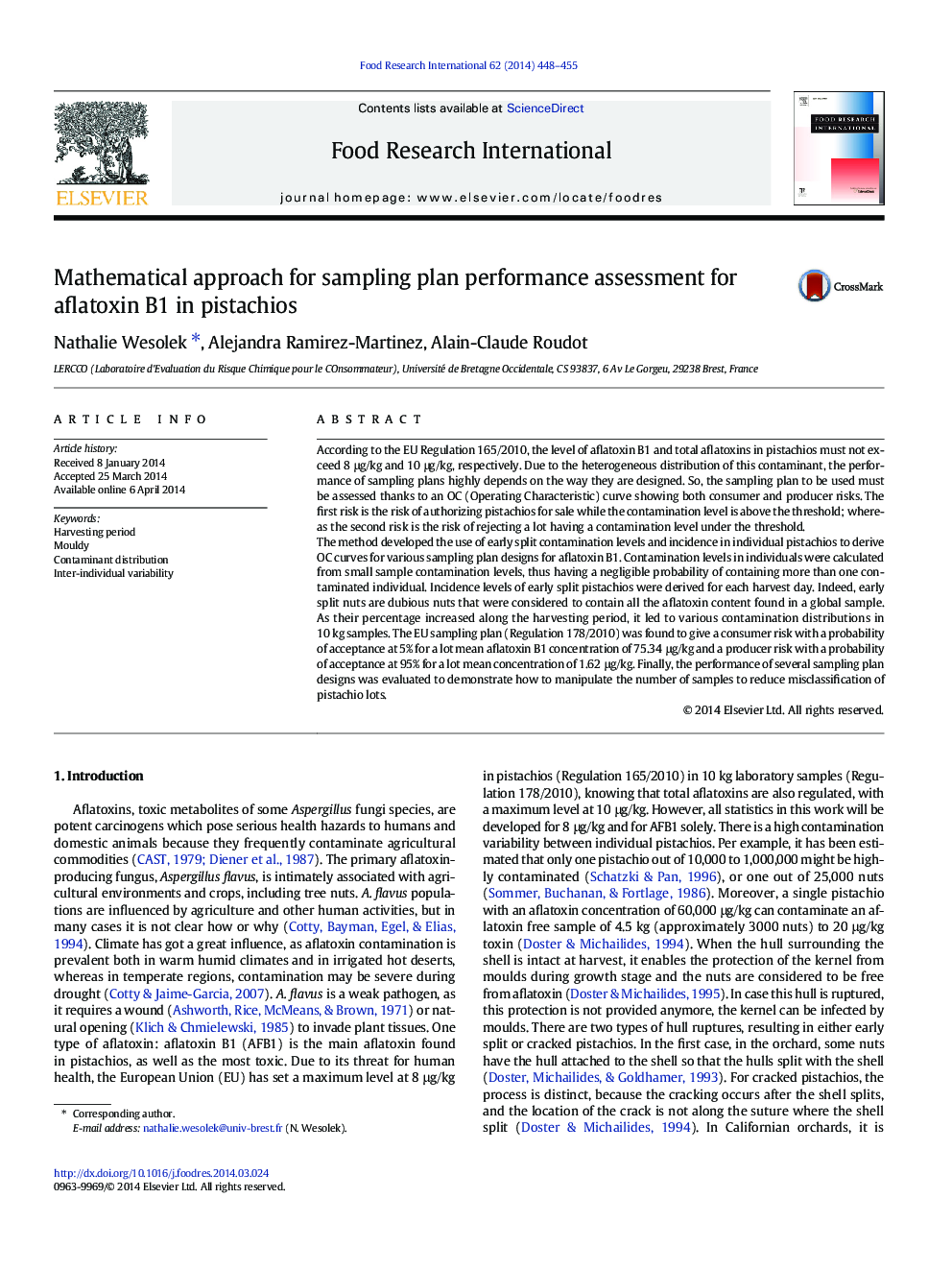| Article ID | Journal | Published Year | Pages | File Type |
|---|---|---|---|---|
| 6395857 | Food Research International | 2014 | 8 Pages |
â¢Use of literature data for incidence and contamination levels in individual nutsâ¢The contamination distribution in 10 kg samples was derived for each harvest day.â¢The EU sampling plan OC curve was computed.â¢The 5% consumer and producer risks were at 75.34 and 1.62 μg/kg.â¢The number of samples has an impact on the misclassification risk of lots.
According to the EU Regulation 165/2010, the level of aflatoxin B1 and total aflatoxins in pistachios must not exceed 8 μg/kg and 10 μg/kg, respectively. Due to the heterogeneous distribution of this contaminant, the performance of sampling plans highly depends on the way they are designed. So, the sampling plan to be used must be assessed thanks to an OC (Operating Characteristic) curve showing both consumer and producer risks. The first risk is the risk of authorizing pistachios for sale while the contamination level is above the threshold; whereas the second risk is the risk of rejecting a lot having a contamination level under the threshold.The method developed the use of early split contamination levels and incidence in individual pistachios to derive OC curves for various sampling plan designs for aflatoxin B1. Contamination levels in individuals were calculated from small sample contamination levels, thus having a negligible probability of containing more than one contaminated individual. Incidence levels of early split pistachios were derived for each harvest day. Indeed, early split nuts are dubious nuts that were considered to contain all the aflatoxin content found in a global sample. As their percentage increased along the harvesting period, it led to various contamination distributions in 10 kg samples. The EU sampling plan (Regulation 178/2010) was found to give a consumer risk with a probability of acceptance at 5% for a lot mean aflatoxin B1 concentration of 75.34 μg/kg and a producer risk with a probability of acceptance at 95% for a lot mean concentration of 1.62 μg/kg. Finally, the performance of several sampling plan designs was evaluated to demonstrate how to manipulate the number of samples to reduce misclassification of pistachio lots.
